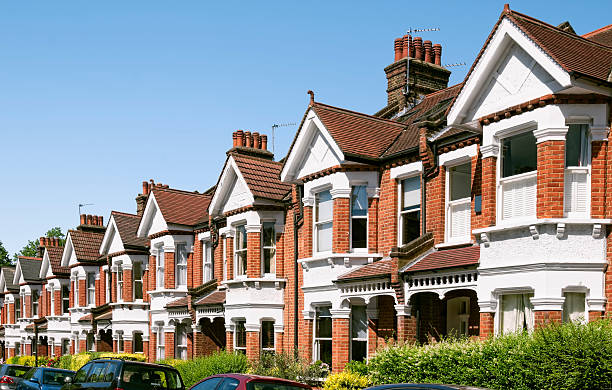Taking a whole house approach to energy efficiency at home

Published on 31 October 2024 10:54 AM
As we progress into autumn and winter, attention starts to turn to ensuring lower running costs in our homes, sometimes at the cost to comfort. There are lots of free and low-cost things you can do to reduce your energy usage immediately. However, in this article we are going to take a wider look at the home to think holistically about the changes you can make to the fabric and systems of your home.
There is lots of jargon when it comes to upgrading one’s home for energy efficiency: retrofit, fabric-first, whole house plans... But what does it all mean and why is it relevant to you?
Retrofit is the process of modifying an existing building to improve its energy efficiency, making them easier to heat, able to retain the heat for longer and the use of renewable energy. Retrofitting one’s home is a high-return and long-lasting solution to existing energy challenges and can be more or less costly depending on the changes that are needed. Please bear in mind two key approaches - ‘fabric first’ and ‘whole house’ - for ensuring an effective retrofit project.
Fabric First Approach
The fabric of a building is another way of saying the building’s structure, e.g. walls, floors, roofs, windows, and doors.
In the same way you would put on a jumper before turning up the heat, the ‘fabric first’ approach places emphasise on reducing the rate of heat loss or gain of the existing structure of a building prior to introducing new technologies. This could mean:
- Draughtproofing windows, doors, and other areas where heat leaks, which is a low-cost undertaking.
- Insulating your loft. Lofts are one of the cheapest and easiest ways to insulate for quite a high rate of return. Current recommendations are for 270-300mm of insulation – top up layers can be easily laid over existing insulation.
- Insulating cavity walls. Making sure that cavity walls, which most homes build after the 1930s have, are full of effective insulating material can drive significant energy savings, and this process causes minimal disruption.
- Insulating solid walls. Properties built prior to the 1930s have solid walls, and while the process of applying insulation on the inside or outside of the wall causes disruption, it offers a significant increase in energy efficient and, importantly for general well-being, leads to a more comfortable home.
-
Insulating floors. Reduces the amount of heat escaping through the floor, with different approaches for timber and concrete floors.
Making these changes will reduce your energy consumption because your home is more airtight and the rate that heat moves in and out through the fabric will be slowed. However, buildings are like people, and they need to breathe. So, when making any changes towards airtightness, it is important to balance these changes with controlled ventilation to avoid the build-up of moisture in the home. Controlled ventilation can be trickle vents in your windows, opening your windows regularly, mechanical extraction systems or mechanical ventilation with heat recovery.
Whole House Approach
The whole house approach looks at the building as interconnected systems. It takes into account how insulation, ventilation, airtightness, heating and energy generation interact as a system to ensure balanced and efficient retrofit process, maximising benefits across the entire building. If retrofit is approached without considering all of the elements of the home, risks can include damp or mould, for example if better draught proofing is applied without considering suitable ventilation.
It is worth taking a step back to think about all of the changes you would like to make overtime and prioritise based on financial capability, which interventions offer the biggest savings and how you envision your home at the end of the process.
Conclusion
Together, these approaches ensure that any home upgrade project is completed thoughtfully, enhancing energy efficiency and wellbeing while minimising costs and environmental impact. By understanding the changes that can be made to an existing structure and viewing the home as a complete system with unique intricacies, retrofit can achieve more affective and permanent results for health, wealth, and planet than isolated upgrades or quick fixes.
Amy Lightfoot - Outreach Officer, SELCE
South East London Community Energy is a local energy cooperative that is dedicated to a cleaner and fairer energy future through local energy generation, reducing local energy usage and making sure no one gets left behind in the process. They have multiple initiatives ranging from support for SE Londoners struggling with their bills, to support for homeowners looking to make their homes more energy efficient, to helping community buildings access local solar energy and efficient lighting systems at affordable rates. For more information visit: www.selce.org.uk

